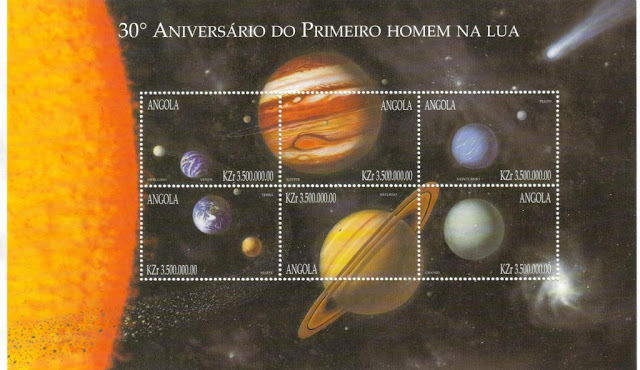Ok, I will admit that I was actually a bit lazy to search for some nice shaped stamps I have...it was simply easier to go for something Australian...but it did fit in nicely with the current AO event :)
I really love this sheet of stamps issued in 2013, showing a number of dinasours. The colours are just so beautiful and even the dinasours dont seem so terrifying...except for that first guy with the name of Koolasuchus. My knowledge on dinasours is, let's just say, non-existent, so I'll just give you a few facts on each one, relying on what google has to say about this bunch of guys here.
I already mentioned the Koolacushus, which was an aquatic temnospondyl estimated to have been around 4 to 5 metres, with a mass of up to 500kg. It is an extinct genus of brachyopoid temnospondyl in the family Chigutisauridae. Fossils have been found from Victoria, Australia and date back 120 Ma to the Aptian stage of the Early Cretaceous. Koolasuchus is the latest known temnospondyl.
On the following stamp we have two representatives of Serendipaceratops, a dubious genus of herbivorous ornithischian dinosaur from the early Cretaceous Period of Australia.
The third stamp shows the Timimus, a genus of small coelurosaurian theropod dinosaur from the Early Cretaceous of Australia. It was originally identified as an ornithomimosaur, but now it is thought to be a different kind of theropod, possibly a tyrannosauroid or unenlagiine
The fourth one, on the top, is a Diamantinasaurus, (meaning "Diamantina River lizard") is a genus of derived titanosaurian dinosaur from late Albian (Early Cretaceous)-age rocks of Australia
Below the River lizard are two representatives of the Qantassaurus, a genus of two-legged, plant-eating ornithischian dinosaur that lived in Australia about 115 million years ago, when the continent was still partly south of the Antarctic Circle. It was named after Qantas, the Australian airline ( in honor of the Queensland and Northern Territory Air Service, which shipped fossils around the country as part of the Great Russian Dinosaurs Exhibit between 1993 and 1996, and sponsored expeditions to South America and Eastern Europe).
And the last guy on our exhibit here is an Australovenator, (or a Southern hunter), a genus of megaraptoran theropod dinosaur from Albian (Early Cretaceous)-age rocks (dated to 95 million years ago) of Australia.
I really wish there was some place on Earth where dinasours still existed...for me it is somewhat difficult to grasp the idea of such animals walking around and the whole concept of such creatures existing is really cool! Just don't ask me to pronounce all those names and genus and stuff :)
For more fun choices, visit Violet's blog.







